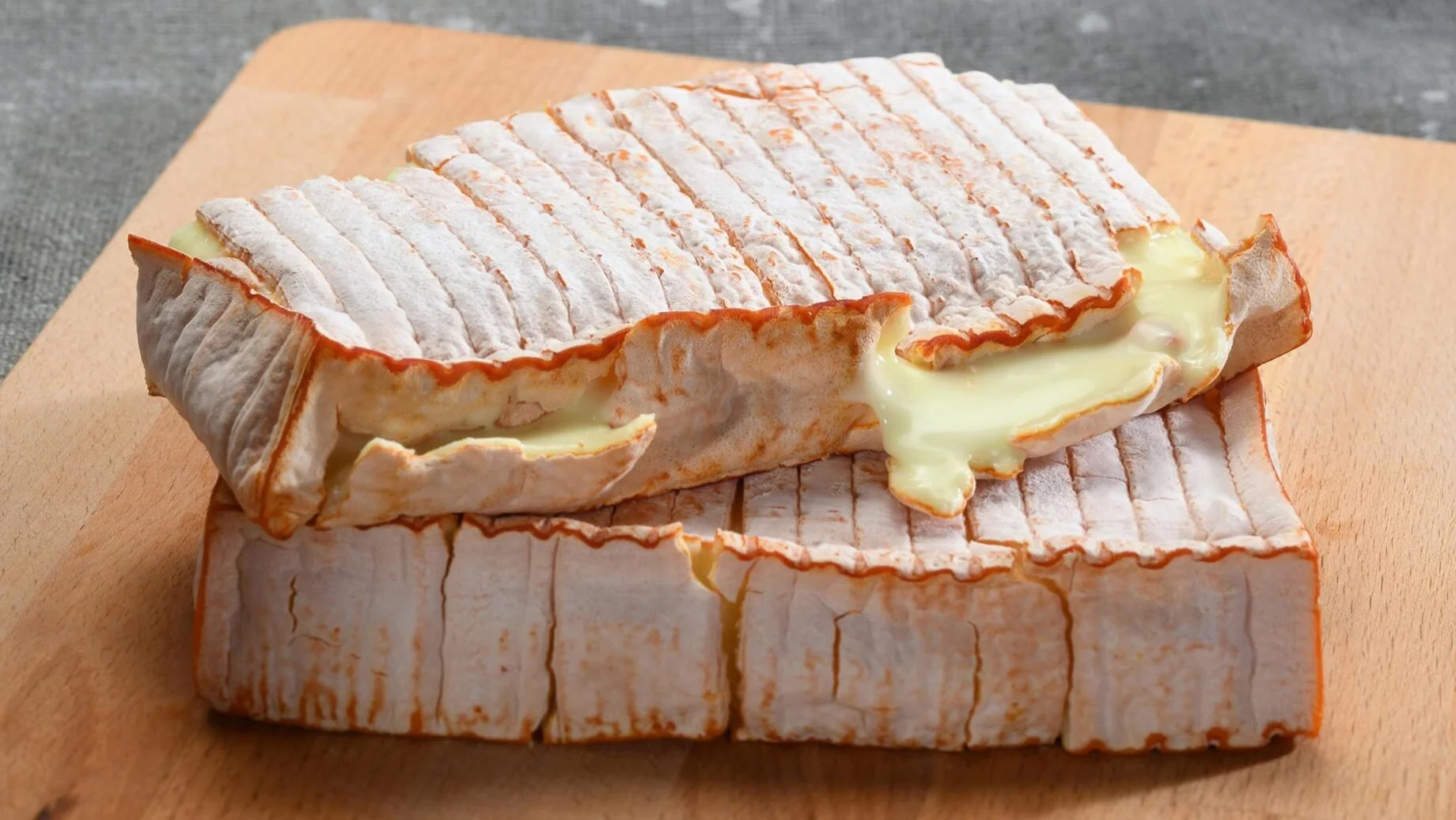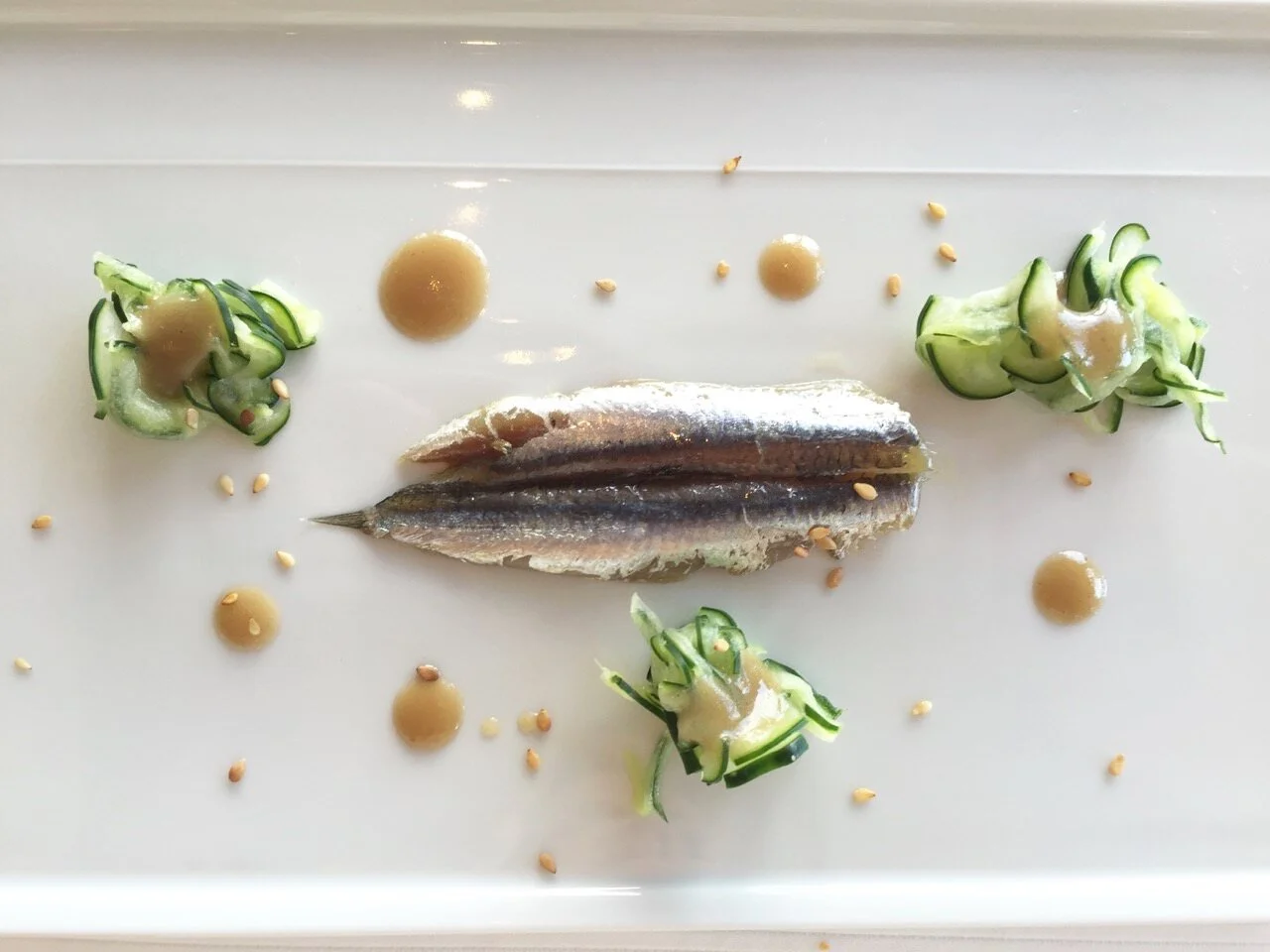Photo: lafromagerie.co.uk
World Cheese Encyclopaedia - Each Sunday learn all about a cheese in season.
This week Bleu de Gex from France.
Photo: fromages.com
Country: France 🇫🇷
Region: Haut Jura
Made from: Cow’s milk
Pasteurised: No
Texture: Dense and creamy
Taste: Fruity, nutty with a touch of bitterness
Certification: AOC
Aging: from 1 to 3 months
Bleu de Gex (also known as Blue du Haut Jura or Bleu de Septmoncel) is produced from raw cow's milk in the Haut Jura region of southeastern France.
Cows graze in the pastures of the Jura Mountains in Comte 6,000 ft. above sea level. Here, they munch on mountain grass and flowers that give their milk a distinct flavor reminiscent of mushroom and tarragon flavors. The mould of the mountain grass and flowers traditionally passed into their milk. This milk is used to produce Bleu de Gex. The mould in the milk used to be enough to create a blue cheese, but today they help it along a little by adding some penicillium roqueforti to the milk. It still retains its beefy, fruity flavor, evenly marbled with pale green mould. Aged one to three months. An unusual blue, it is formed into a large flat wheel with the rind forming naturally with a white, powder-like mould that can be wiped off when you want to eat it. Bleu de Gex is made with full fat unpasteurized cow’s milk in farmhouse cooperatives.
Granted AOC (name protected) status in 1986, the areas of production are the "Departments" of l'Ain and Jura, and milk for production must be sourced from Montbeliard or Pie Rouge de l'Est cows that graze in a designated area within the Jura mountains. To meet Appellation d'Origine Contrôlée guidelines, it must contain only the milk of Montbéliard cows. It is flavorful and stronger than the majority of French blue cheeses.
Aromas of Bleu de Gex are mild but distinctly nutty and smell of damp earth and cellar. The texture of the cheese is dense, close and supple, shot through with fine blue-green veins. The color of the interior paste varies from butter-yellow to ivory depending on the season and cheeses have a thin, brown rind that is embossed with the word "Gex".
Sharp natural threads of blue veins work their way through the creamy, slightly crumbly pate. The rind is rather dry and rough textured when young, becoming a little moist as the cheese matures. The cheeses are left to mature for a few months before being pierced, allowing the air to penetrate into the cheese, activating the penicillium glaucum moulds and spreading the blue veins. It partners the lovely alpine-style Gruyere cheeses well, and can be added to fondue with great success. The best time for this cheese to be enjoyed is between March and June, and September through January.
Photo: culturecheesemag.com
History
The history of Bleu de Gex is closely related to that of Bleu de Sassenage, and the cheeses have a number of similarities, as they both originated in the the village of Villard-de-Lans.
When, in 1348, the Dauphiné region was ceded to the first French Dauphin, a number of the cheesemakers emigrated to the "Pays de Gex" in the Haut Jura. There they developed from cows milk a blue moulded cheese. Previously the region had been dominated by sheep and goat cheese.
With the encouragement of the Bishop at the abbey at Saint-Claude, the cheesemakers established production of Bleu de Gex and Bleu de Septmoncel which have both become recognized in their own right.
In the 16th Century the Blue de Gex was the cheese of choice for Charles Quint, the owner of the Franche-Comte. The Blue de Gex today is still produced in the small mountain dairies employing the traditional methods that have been handed down from the 14th century.
Photo: winefetch.com
How to enjoy it
Bleu de Gex is traditionally eaten on boiled potatoes, but also makes an excellent table cheese. Because it is more supple and less creamy than other blues, it also makes a good salad cheese.
With a fruity, nutty flavor and a touch of bitterness, Bleu de Gex is a powerful, firm, French cow's-milk cheese. Pairing with the bold structure and dark fruits of an aged Cote du Rhone will bring out the fruit in this lovely cheese.
Blue de Gex also pairs well with a fruity light regional red wine such as Côtes-du-Jura (Poulsard grape), a Beaujolais or Burgundy.
Sources: igourmet.com, winefetch.com, LaFromagerie.co.uk, culturecheesemag.com, Wikipedia, Fromages.com
Follow True Foodies


























